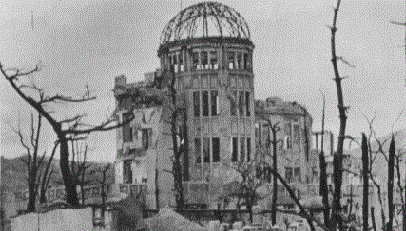This article discusses how pictures of the bombings of Hiroshima and Nagasaki may be helpful for preventing future uses of such powerful and catastrophic weapons.
The article begins as follows:
Little Boy and Fat Man, the bombs the United States dropped on Hiroshima and Nagasaki seventy years ago, killed far more people than any other two weapons in history. The combined death toll was around 200,000. It boggles the mind to think that so many could be killed so quickly, yet even as we take the moment to reflect and pay respects to the victims and survivors, it’s interesting to consider the number in context. By the absurd standards of World War II, the sum is small, amounting to about a quarter of one percent of 80 million or so total deaths.
The importance of the bombings as a strategy lesson may also be exaggerated. Careful historical analysis by Tsuyoshi Hasegawa, Ward Wilson, and others shows that the bombs may have been inconsequential to Japan’s surrender. The Soviet Union declaring war on Japan may have been the larger factor. Wilson argues persuasively that some strategists mistakenly inflate the military value of nuclear weapons, partly thanks to the myth that the bombings ended the war.
But while the humanitarian and military significance of the attacks may be overstated, there is no overstating their significance as a warning. Images of the attacks and their aftermath—mushroom clouds, ruined cities—have become unforgettable emblems of nuclear war, that along with the gripping stories of survivors—the hibakusha—have burned the weapons’ terrifying power into our minds.
The remainder of the article is available in the Bulletin of Atomic Scientists.
Image credit: Shigeo Hayashi
This blog post was published on 28 July 2020 as part of a website overhaul and backdated to reflect the time of the publication of the work referenced here.




